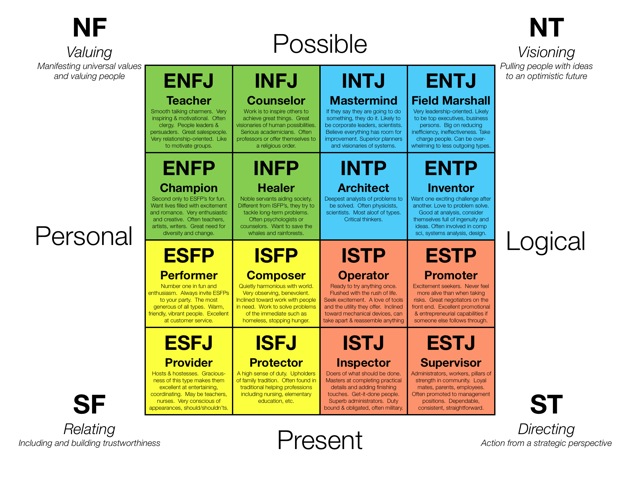Time to get down to business
Thursday, May 5th and Friday, May 6th marked the 2016 annual meeting of the Association of Reproductive Mangers (ARM). The professional group of the American Society for Reproductive Medicine (ASRM) convened on a pair of gorgeous near-summer days in downtown Chicago. Roughly 100 practice administrators attended, coming from single-physician fertility clinics to multi-state practice groups. At the welcome reception on Thursday, ARM Chair Brad Senstra invited the group to introduce themselves and enjoy dinner with someone they hadn't yet met. It was an in-person networking and educational opportunity that isn't especially common for practice admins. Here's some of what we learned
1). Salary Surveys, Benefits, and Calculation of Total Compensation
Sara Mooney, Human Resources Manager at Seattle Reproductive Medicine (SRM), opened the meeting on Friday by addressing many of the common issues that we face when reviewing and rewarding our team members. Sara recommends an online tool called Payscale, to review the pay averages of positions by geographic area and years of experience. Tools like Payscale generate reports that you can share with your employees, so that they understand when you are compensating them at a higher percentile relative to your competitors. Even when pay increases are not in the budget or may simply not be timely, there are other ways of rewarding your team, such as peer recognition from employee comment cards, added vacation time, and small gifts such as restaurant gift cards or sweets.
Carla Giambona, Director of Human Resources at IntegraMed Fertility, tackled the topic of benefits and calculating total compensation. It's important that employees know what your practice pays into their health and overall benefits package. Very often, employees view their salary as their total compensation. In reality, the practice may well be spending an additional 50% of that on health insurance coverage and other benefits. Premiums are among the biggest staff expenses to practices so engaging your team in wellness activities is a way to reduce your premium costs. Carla cautions however, that wellness engagement is a longer term strategy whose benefits will likely not be seen in the form of premium reductions within two or three years.
2). Values Development and Implementation
Marianne Kreiner, Chief Human Resources Officer at Shady Grove Fertility, shared a meaningful (and very fun) exercise from one of the most successful practice cultures in the country. The total audience was divided into small groups of around eight people. Each subgroup was given a list of 150 words; desirable qualities for any team. Teams were welcome to add a word to the list if they preferred a quality that wasn't mentioned. Each person selected their twenty most preferred words and then group voting reduced the list to twelve and finally three words. The subgroups merged with one another and repeated the process with their combined word pools until finally the two halves of the entire audience came together as one to decide upon the chosen values that they felt represented their group culture. Want to know something about this ARM group? You must be hiring class acts. Independently, both halves of the audience chose "integrity" among their final three characteristics, a word that wasn't listed in the original 150.
3). Leadership
"Leadership does not carry a title," asserts Brad Senstra, Executive Director at SRM. Senstra explains four ways that leaders can encourage leadership, and therefore exhibit it in themselves.
Clarifying Values
Inspiring a Shared Vision
Enabling Others
Encouraging the Heart
Above all, what sustains leaders, is that they love what they do. "Leaders build character by enabling others to act."
Example of leadership from Brad's talk. If the story of these two dogs doesn't rock your soul, then you don't have one.
4). National Public Health Action Plan for the Detection, Prevention, and Management of Infertility
Dmitry Kissin, MD of the Centers for Disease Control (CDC) delivered some reassuring news about the agency's efforts to address infertility as a public issue. The mission of the National Assisted Reproductive Technology Surveillance System (NASS) is to promote the health of women and men who receive infertility services, the health of pregnancies achieved through these services, and the health of infants conceived through these services, by conducting surveillance and research, creating and maintaining strategic partnerships, and moving science to practice. Among NASS's goals to address infertility as a public health concern, are to develop a standardized case definition of infertility and to eliminate disparities in access to affordable infertility services.
5). Patient Services
Lisa Duran, CEO of patient focused, Reconceived, facilitated an exercise that can be replicated with both your patients and your personnel. Duran uses the Myers-Briggs personality survey to identify how people with different personality profiles communicate in distinct ways. The 16 distinctive personality types are determined by a combination of preferences.
Do you prefer to focus on the outer world or on your own inner world?
Extroversion (E) or Introversion (I)
Do you prefer to focus on the basic information you take in or do you prefer to interpret and add meaning?
Sensing (S) or Intuition (N)
When making decisions, do you prefer to first look at logic and consistency or first look at the people and special circumstances?
Thinking (T) or Feeling (F)
In dealing with the outside world, do you prefer to get things decided or do you prefer to stay open to new information and options?
Judging (J) or Perceiving (P)
Duran says its helpful to know patients' preferences because people with different personality profiles frequently equate to "speaking a different language to one another". I learned that I'm an ENFJ (the teacher) and I found the summary to be pretty spot-on.
6). The Knights at the Round Table(s)
I could only attend one of the round tables, and it certainly won't surprise you that I chose marketing. Jacqueline Sharp of HRC Fertility moderated the table of very different practice groups. All four squares of the big market, small market, small practice, large practice quadrant were represented. I continue to be fascinated by how different practices use different models to affect patient volumes. Some groups follow the recommended 3-5% of total revenue as a marketing budget. Many practices have no planned budget at all, but rather approve or reject marketing investments as they arise. Proving return on investment (ROI) is a challenge for all of us--and I'm excited to continue to address that challenge.
Come one, come all
This was my first ARM meeting and I plan to be back next year, which means I would recommend it to you. The content of the meeting is beneficial not only to administrators and those involved in practice development, but also to nurses and physicians. The ARM group offers what is probably the most team-comprehensive programming within ASRM. The input of others in our professional society helps us to build teams that grow, super-serve patients, and are just downright pleasant to work with. If you'd like to get to know the group and their topics before you board a plane to Chicago next year, join us for some of the incredible round-tables and symposiums that they'll be hosting at the ASRM Scientific Congress in Salt Lake City. See you in October!



